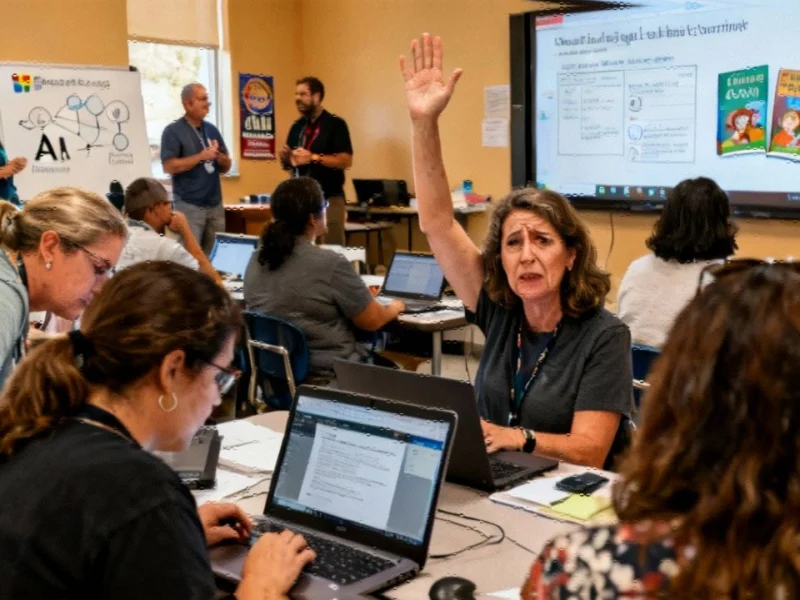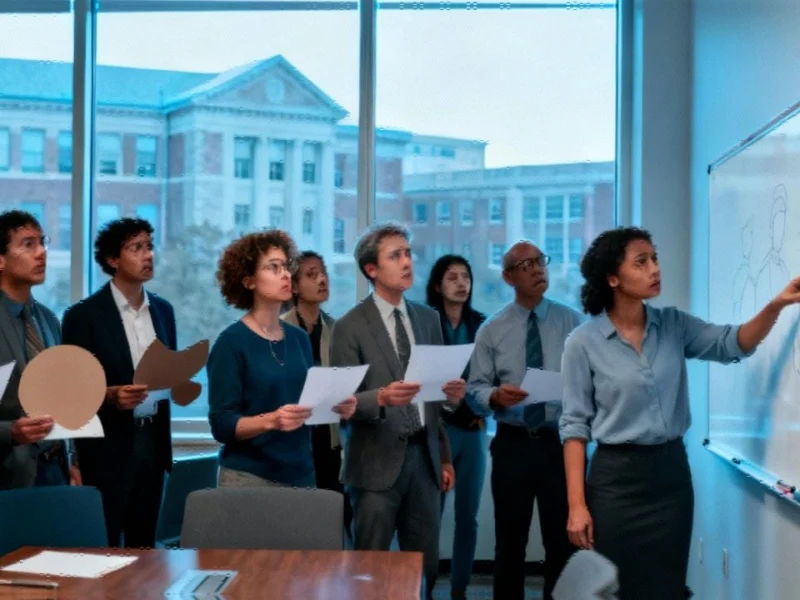Note: Featured image is for illustrative purposes only and does not represent any specific product, service, or entity mentioned in this article.
The New Digital Literacy Imperative
In an unprecedented alignment of interests, technology behemoths Microsoft, OpenAI, and Anthropic are investing millions in teacher training programs across the United States. This strategic partnership with major teachers unions represents a significant shift in how artificial intelligence is being integrated into educational systems. While the immediate goal is enhancing classroom instruction, the broader implications point toward preparing future generations for an AI-driven workforce.
The American Federation of Teachers (AFT) has secured $12.5 million from Microsoft over five years, $8 million plus technical resources from OpenAI, and $500,000 from Anthropic. These substantial investments will establish AI training hubs, with the first planned for New York City, aiming to train approximately 400,000 educators through virtual and in-person workshops over the next five years.
Strategic Partnerships with Guardrails
Both the AFT and the National Education Association (NEA) have approached these partnerships with deliberate caution. Educators, not corporate funders, maintain control over training design and content delivery. The unions retain intellectual property rights for all training materials, which comprehensively address not only AI implementation but also critical safety and privacy concerns.
Daaiyah Bilal, NEA’s senior director of education policy, emphasized their surgical approach to the partnership: “We are very mindful of what a technology company stands to gain by spreading information about the products they develop.” This measured perspective reflects the broader educational community’s awareness of corporate interests while acknowledging the necessity of these resources.
The Corporate Perspective: Beyond Philanthropy
For technology companies, these investments represent strategic positioning in the competitive AI landscape. Microsoft’s $4 billion AI training initiative and Google’s $1 billion commitment to AI education programs demonstrate the sector’s recognition that early exposure to their platforms can establish lasting user preferences. These tech giants invest millions in teacher AI training as part of a broader effort to shape the technological ecosystem of tomorrow.
Microsoft CEO Brad Smith acknowledges the need for healthy skepticism, noting that “while it’s easy to see the benefits right now, we should always be mindful of the potential for unintended consequences.” This recognition of AI’s potential impact on critical thinking demonstrates the complexity of integrating advanced technology into educational environments.
Classroom Transformation in Real Time
The practical implementation of these training programs is already yielding remarkable results. Educators participating in workshops are discovering AI’s capacity to revolutionize lesson planning, differentiation, and student engagement. From generating illustrated flashcards in multiple languages to adapting reading materials to individual student levels, teachers are finding that AI tools can dramatically expand their instructional capabilities.
As one middle school teacher expressed after a training session, “I can give my students access to things that never existed before. As a teacher, once you’ve used it and see how helpful it is, I don’t think I could go back to the way I did things before.” This sentiment echoes the experiences of educators discovering that human-centric AI strategy approaches can enhance rather than replace their professional expertise.
Addressing the Digital Divide
The partnerships extend beyond simple tool implementation to address fundamental questions about educational equity. Microsoft’s program providing free access to CoPilot tools for all school districts and community colleges in Washington state represents an effort to ensure that AI benefits aren’t limited to well-funded districts. Similarly, Google’s free access to its Gemini for Education platform for U.S. high schools attempts to level the technological playing field.
These initiatives come at a critical moment, as multiple studies indicate that while AI adoption in schools is accelerating rapidly, comprehensive training and ethical guidelines are lagging behind. The challenge extends beyond simple implementation to ensuring responsible use, particularly as industry developments in communication platforms demonstrate the importance of establishing appropriate usage parameters.
Broader Implications for Workforce Development
The federal government’s creation of an AI Education Task Force underscores the national strategic importance of these developments. With more than 100 companies now participating in private investment in AI education, the initiative represents a coordinated effort to achieve what the Trump administration describes as “global dominance in artificial intelligence.”
This focus on workforce preparation reflects recognition that today’s students will enter a job market transformed by artificial intelligence. The training partnerships represent a proactive approach to ensuring that American workers can compete effectively in this evolving landscape. The emphasis on practical implementation mirrors market trends across sectors where technology integration is reshaping professional requirements.
The Path Forward: Balancing Innovation and Caution
As these programs expand, educators and policymakers face the ongoing challenge of balancing innovation with appropriate safeguards. The rapid evolution of AI capabilities necessitates continuous training updates and ethical considerations. Robin Lake, director of the Center on Reinventing Public Education, cautions that “these are private initiatives, and they are run by companies that have a stake,” highlighting the importance of maintaining educational priorities at the forefront.
The success of these partnerships will ultimately be measured not by corporate returns on investment, but by their ability to equip students with the critical thinking skills and technological literacy needed to navigate an increasingly complex digital world. As AFT President Randi Weingarten noted, the educational community approached tech companies for support because “there is no one else who is helping us with this,” acknowledging both the opportunity and the necessity of this unconventional alliance.
This article aggregates information from publicly available sources. All trademarks and copyrights belong to their respective owners.


